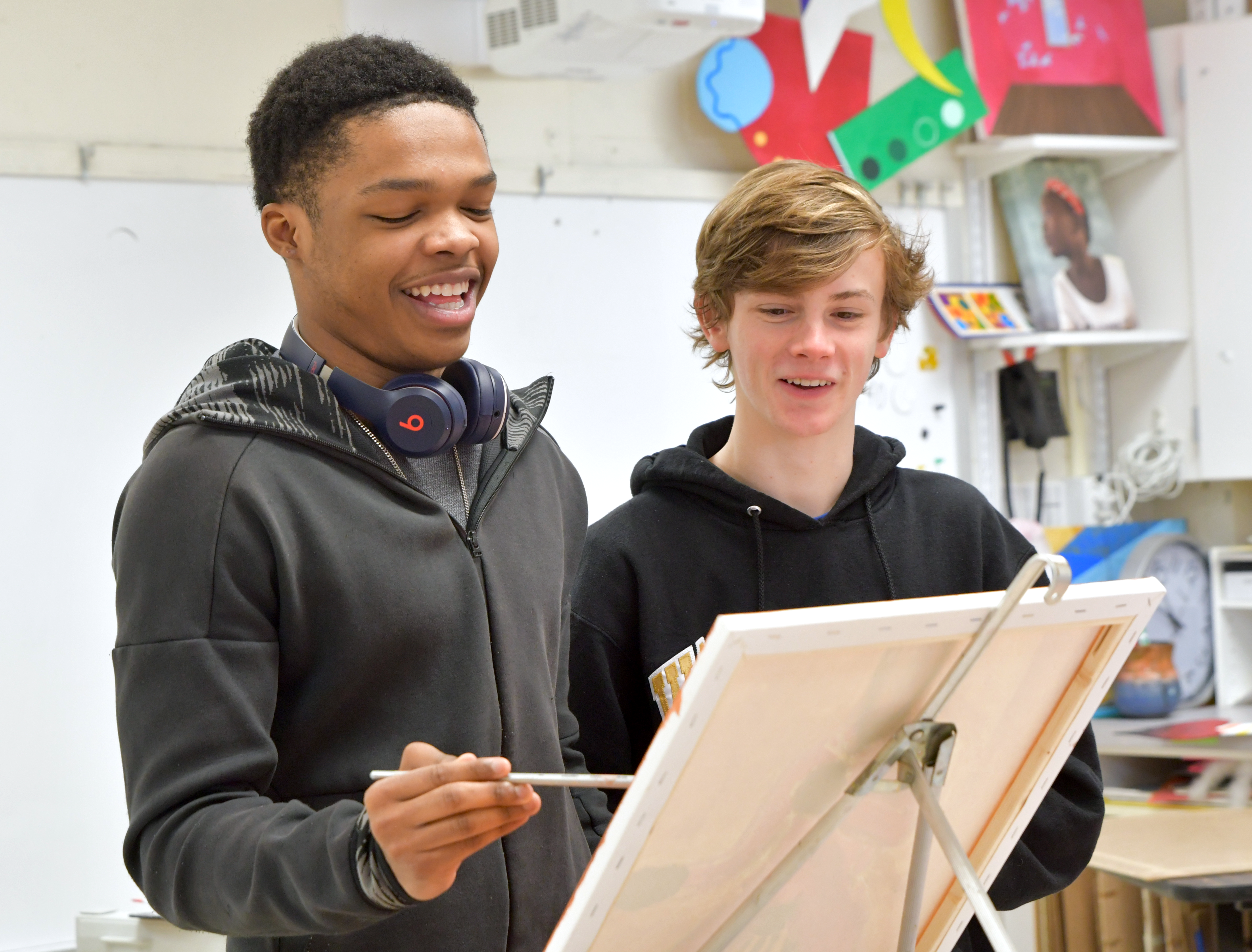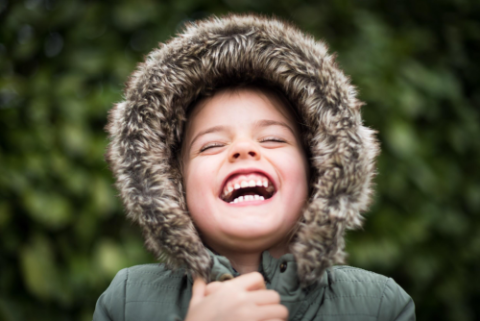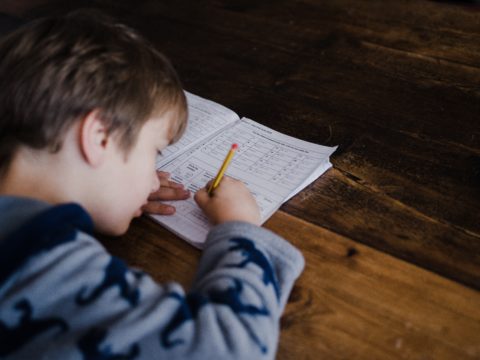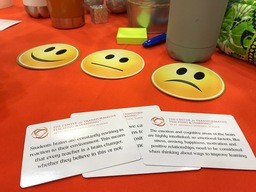This article is from vol. 4.2 of The Bridge, the newsletter of The Center for Transformative Teaching & Learning. Each month The Bridge analyzes a specific aspect of teaching and learning through a Mind, Brain, and Education Science research-informed lens. This article is by Glenn Whitman, Director of the CTTL. Click here to subscribe to The Bridge.
I had the privilege to present at a range of professional conferences in 2019 including Learning Forward, SXSWedu, the New Teacher Center Symposium, Learning and the Brain, and researchED. Of all the great sessions and workshops each of these professional learning experiences offered, one moment impacted and informed my thinking and work more than any other.
In November of 2019, I had the chance to attend a Digital Promise meeting of their League of Innovative Schools in Washington, DC. There, Karen Cator, President and CEO of Digital Promise, made a statement that I cannot shake from my brain: “A student often has to get lucky to have a good teacher.”
As we think about creating a challenging and equitable educational experience for ALL students, we know from research that having a highly qualified teacher is critical to closing achievement and potential gaps. But the variation among teacher quality remains too great. Too often, students at the same school in the same subject or grade level, but with different teachers, have vastly different learning experiences. This was reinforced as I listened to Dr. Sonja Santelises, the CEO of Baltimore City Schools, at the researchED and Learning Forward conferences. She spoke about “educational redlining,” where inequities in access to high quality education exist, in part because of inequities in access to high quality curriculum. Imagine the difference in the level of challenge students have the opportunity to grapple with when some teachers have their class read The Odyssey while others in same grade have their class read The Hunger Games. Dr. Santelises asked, Which students are given the opportunity to productively struggle? Which are not?”
The importance of having all students experience a challenging curriculum is reinforced in Robert Pondiscio’s book, How the Other Half Learns. A curriculum delivers the knowledge that students need to acquire learning and life skills such as reading, writing, and thinking critically and creatively about the world in which they live. Having a knowledge rich curriculum for all students at all grade levels is important — and without a knowledge rich curriculum it is hard or impossible to obtain these vital skills. Knowledge and skills go hand in hand; we should never accept this pair as an either/or proposition. But curriculum alone will not make the difference. Understanding the importance of building relationships with students, and them knowing a teacher cares and likes them, is also a pedagogical strategy, and perhaps an underappreciated one at that.
Imagine then if every student then had an expert teacher. What knowledge, skills, and mindsets would those teachers possess to earn their “Teacher Expert Badge?”
John Hattie talks about the difference between experienced and expert teachers. I remember first reading about expert teaching in John Hattie’s paper, Teachers Make a Difference, What is the Research Evidence? Hattie explains that simply having a great knowledge of your subject matter is not enough, and proposes 16 prototypic attributes of expertise. Many of these, unsurprisingly, align with what we would consider to be a foundational understanding of the promising research and strategies from Mind, Brain, and Education (MBE). For example, “Expert teachers are more adept at monitoring student problems and assessing their level of understanding and progress, and they provide much more relevant, useful feedback” may start ringing many bells in your own MBE knowledge. But how do we bring MBE to all teachers — which is 3.5 million people in the United States alone?
The CTTL is the first school-based, teacher-led research center that has created scalable solutions so that no student has to get “lucky” to have a teacher that understands their brain. The CTTL has been privileged to work globally with teachers and students from public, charter, and private schools to bridge the gap between research and practice using “next day” strategies and teacher-friendly resources. The CTTL has created ways for teachers, schools, and districts to measure their learning through its free Neuroeducation Confidence Diagnostic, which is an easy place to begin or elevate a teacher, school, or district’s MBE journey. If you want to give this simple 10-minute-or-less diagnostic to your faculty, follow the link for instructions and an example of how we will report back to you.
There is a breadth of promising research-informed buckets available for teachers, schools, and districts to explore. And we must remember that laid alongside published research studies should be the insights and professional wisdom accrued by practicing teachers — both are important as we strive to find practical solutions for real-school challenges. This includes strategies for memory, engagement, belonging, metacognition, feedback, and so forth. But before teachers even get to this buffet of awesome science of teaching and learning strategies, the CTTL believes there is a “Big 3 in MBE” that everyone should possess. All teachers, leaders, students, parents and policy makers — all should know and embrace the “Big 3 in MBE.” The CTTL has prioritized these through its printed resources, in-person programs, and virtual experiences. We believe the “Big 3 in MBE” should be known by all future teachers from their pre-service training, or be part of their professional development learning if they are already in the classroom. Here they are…
Neuroplasticity
The old myth that the brain is set around the age of 3-4, or 11-12, or even 18 is just that – a myth. We now know that neuroplasticity exists throughout our lives — our brains alter over time in reaction to our environment and experiences. While there is a significant genetic component to how our brain is wired, there is also a very significant environmental component. All the experiences we have and how we unpack them contribute to shaping the brain we currently have. Our brain is never “set” as neurons are formed, myelinated, connected and pruned all through our life. This is the basis of possibly the most important research-to-classroom-instruction contribution from neuroscience — that every teacher must see themselves as a brain changer. Every student, regardless of race, class, gender, or any other social identifier, can learn through high quality strategies, deliberate practice, effective feedback, scaffolded support, a well-constructed knowledge-rich curriculum, and positive relationships in school.
Emotion and cognition are intertwined
Students bring their emotions, their identity, and their whole mental and physical selves to every school day. And this is deeply entwined with their ability to learn at any given moment because of the complex way the brain works as a series of systems. Many parts of the brain are involved in multiple systems — as is the case with emotion and cognition systems. For example, the emotional switching-station of the brain, the amygdala, is part of the brain’s limbic system — a system that also includes one of the key memory centers, the hippocampus. The limbic system is also involved in the process by which incoming sensory information passes through to the prefrontal cortex, the brain’s higher order thinking region. This sounds complicated, and that’s the point — emotion can and should not be separated from learning.
For example, incoming sensory information does not always pass through the amygdala “switching station” to the prefrontal cortex, the brain’s higher order thinking region. When students experience trauma, toxic stress, or even episodic stress, their fight, flight, or freeze response can kick in, making learning difficult or impossible. Early in the work of the CTTL we were introduced to the concept of downshifting by Dr. Mariale Hardiman at the Johns Hopkins University School of Education, “as a metaphor to describe how negative emotions cause us to process in our brain’s emotional center and lose focus on higher order thinking.” As you read this, you might be able to recall your own moment when a teacher, coach, mentor or even colleague downshifted you and paralyzed your learning.
Some stress is helpful in learning, however. But lots is not. Some measured, monitored degree of stress helps build engagement and helps students develop healthy stress response systems. But sustained high levels of stress can lead to significant physical and mental health consequences and can even have epigenetic effects. High levels of stress need to be addressed by a multi-pronged approach. The work of Denise Pope, Stanford Professor and author the Foreword to the newest volume of Think Differently and Deeply, is particularly useful, and we recommend that you investigate the work of her organization, Challenge Success.
The work of the Mindset Scholars Network is also helpful. This network identifies three mindsets that teachers should be familiar with and using to inform their work: growth, belonging, and purpose and relevance. We might argue that the belonging mindset is perhaps the most important of the three. If a student does not feel like they belong in a class or school, providing a level of challenge and support for them to develop and grow would be difficult. Aiding identity validation and eliminating identity threat are vital. Belonging also means having high expectations for all students, and making sure that each student knows that you have these high expectations of them and that you believe in their ability to meet these expectations over your time together.
Eliminate neuromyths
One of the barriers to creating learning environments that align with current research in Mind, Brain, and Education Science research is the persistence of neuromyths that could be considered detrimental pedagogy. The most prolific neuromyth, despite the preponderance of research and the valiant efforts of the Twitter world, is the continued belief in learning styles. Belief in learning styles leads to teachers, students, and even parents having a fixed mindset and runs counter to what we know about neuroplasticity. In addition to learning styles, other neuromyths include:
- There are critical periods in childhood after which certain things can no longer be learned.
- We only use 10% of our brain.
- Some people are left-brained whereas others are right-brained.
- Children must acquire their native language before a second language is learned. If they do not do so neither language will be fully acquired.
We must eliminate neuromyths from our practice. Starting with our own classes, students and schools, and then working to scrub them from our profession. This said, a challenge remains that “educators and individuals with high neuroscience exposure continue to endorse about half or more of the ‘classic’ neuromyths, despite their training.” (1) So eliminating neuromyths must be seen as an ongoing battle for us all.
While “feeling lucky” might conjure up memories about a 1970’s Clint Eastwood movie character, a student, parent, or guardian should never have to feel lucky to have an expert teacher. Students should get what they deserve — teachers and school leaders who know the promising research behind the Science of Teaching and Learning, and who can use these insights to inform, validate, and transform how they design the whole child’s school experience.




